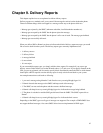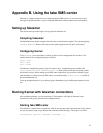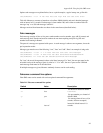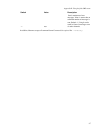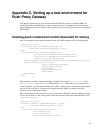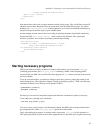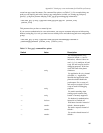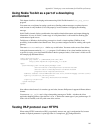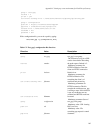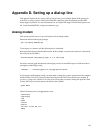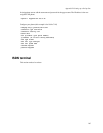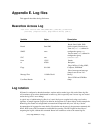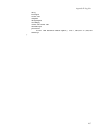
Appendix C. Setting up a test environment for Push Proxy Gateway
second one pap control document. (For command line options, see Table C.1.). For example doing one
push(you can simplify push url by setting a ppg configuration variable, see "Setting up push proxy
gateway"; q flag here prevents dumping of test_ppg program debugging information):
test/test_ppg -q http://ppg-host-name:ppg-port/ppg-url [content_file]
[control_file]
This presumes that you have set trusted-pi true.
If you want use authentication in a test environment, you can pass username and password either using
headers (setting flag -b) or url (you must have set trusted-pi false and added wap-push-user configuration
group):
test/test_ppg -q http://ppg-host-name:ppg-port?username=ppg-username’&’
password=ppg-password [content_file] [control_file]
Table C-1. Test_ppg’s command line options
Switch Value Description
-c string
Use content qualifier string
instead of default si (service
indication). Allowed values are
wml, si, sl, sia, multipart, nil and
scrap. Nil and scrap are used for
debugging purposes. Wml does
work with some older phone
simulators.
-a string
Use application id string instead
of default any. Application
identifies the application in the
phone that should handle the
push request. Sia, ua, mms, nil
and scrap are accepted. Nil and
scrap are used for debugging
purposes.
-e string
Use tranfer encoding when
sending a push content. Only
base64 is currently supported.
-b boolean
Use headers for authentication,
instead of url. Default off.
-i number
Wait interval number instead of
default 0 between pushes.
-r number
Do number requests instead of
default 1.
-t number
Use number threads instead of
default 1.
100



